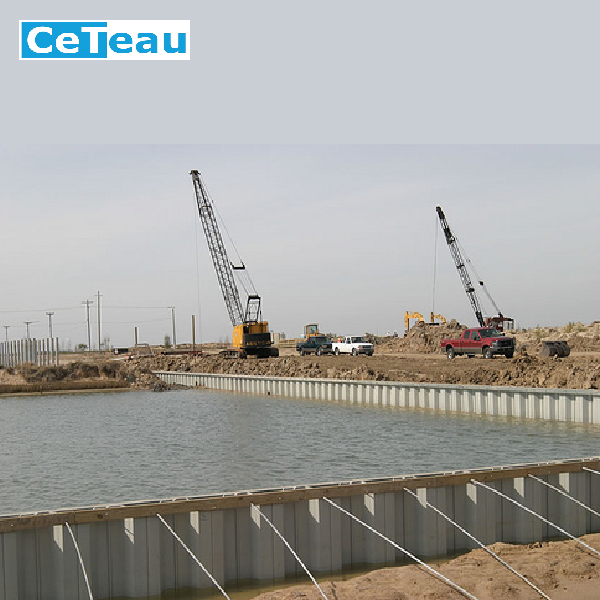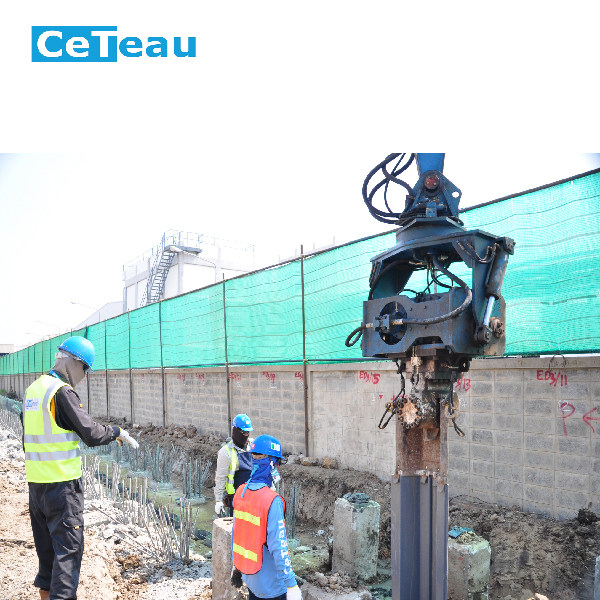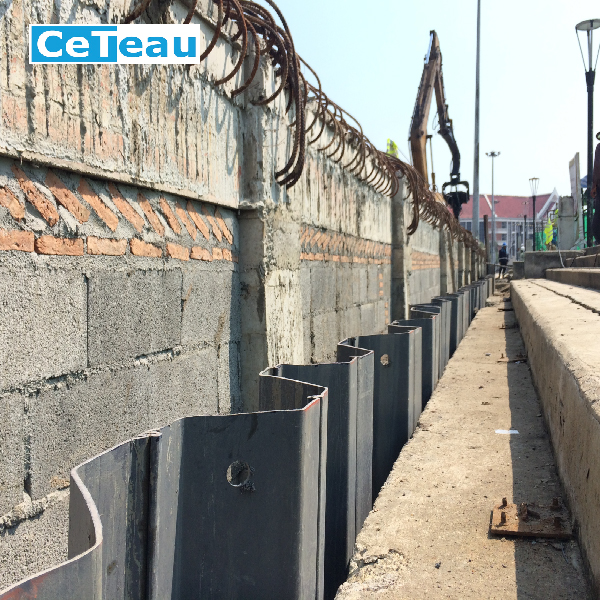Description
VINYL SHEET PILE INSTALLATION
There are a large number of techniques to drive vinyl sheet piles. The system used largely depends on the circumstances. In some situations, particularly when short lengths of Plastic Piling are being installed, it can be inserted into the ground manually by using a maul and pile cap. This is often the case in peat land areas, where the ground conditions are more favorable. When installing longer lengths, or where the ground conditions are more difficult, a piling hammer should be used. Driving the sheet pile directly can be done with a standard pneumatic hammer or a light vibrator with or without a clamp. This system is only suitable for driving at light conditions and to a limited depth.
For heavy conditions and installation from 4m up to 8m depth, it is advisable to use a steel support sheet pile with exactly the same shape as the PVC profile. With support harder soil can be penetrated and installation is speeded up because the hammer does not have to be disconnected from the steel guiding sheet pile.
ADVANTAGES
- Does not rot or rust.
- Manufactured from recycled plastic.
- Resistant to the majority of chemicals.
- Not affected by salt water.
- Light weight, easy handling.
- Reduced impact on natural resources.
DISADVANTAGES
- Limited free standing height.
- Not reusable.
INSTALLATION CRITERIA
- Sheet pile length.
- Soil conditions.
- Obstructions.
- Onshore or offshore.
- Water depth.















